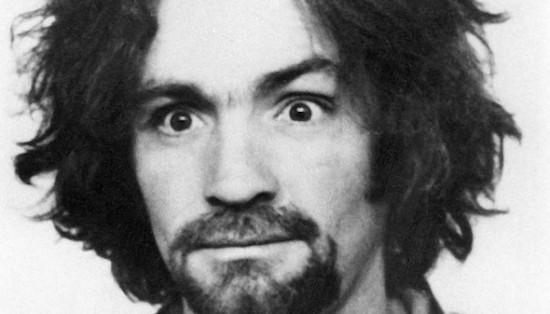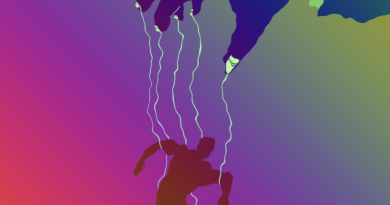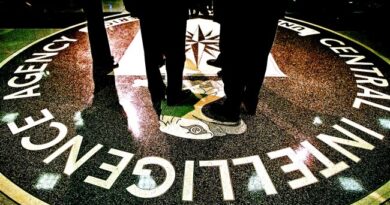Features | Tome On The Range | Cash From CHAOS: Charles Manson & The CIA

Visit a bookshop and you’ll find the True Crime selection is near-hidden, stashed away near the lav perhaps, and often completely separate from Crime Fiction. It’s a tacit acknowledgement that books about real psycho killers are seen as something of an embarrassment. But they sell. And occasionally a great writer (Norman Mailer, Truman Capote, Gordon Burn) dares to dabble in the genre, trying to turn the dross of schlock shock into literary gold. Tom O’Neill is well aware of such esteemed predecessors and tries very hard to breath new life into the Manson saga with this re-examination of the case. His assignment for Premiere magazine (now defunct) began in 1999 but his search for truth quickly became bogged down in a near Borgesian labyrinth of complexity. The book arrives now, twenty years after he began. Was it worth the effort?
O’Neill quickly admits to times when he was broke and “terrified that I was becoming one of ‘those people’: an obsessive, a conspiracy theorist, a lunatic.” He has interviewed more than a thousand people and has had ‘multiple’ death threats. His central question, as with Gordon Burn in his book on Peter Sutcliffe, Somebody’s Husband, Somebody’s Son (1984), is a simple one: ‘why did any of this happen at all?’
So what does O’Neill get hung up on? Firstly he distrusts prosecutor Vincent Bugliosi, author of the best-selling account of the murderous Family, Helter Skelter (1974). He alleges that Bugliosi knew that one of his witnesses, the successful record producer Terry Melcher, knowingly lied under oath. Melcher, O’Neill says, met up with Charles Manson after the murders and that this information was documented in Bugliosi’s pre-trial notes. Melcher denied any such meetings during the trial.
O’Neill soon finds himself in a dodgy James Ellroy world of “duplicitous celebrities, seedy drug dealers, bumbling cops, and spurious prosecutors”. He admits maybe he should have stopped researching at this point and filed his piece but instead he “kept going, although in many ways I’ve come to regret it.” The whirlpool lure of excess knowledge proves too seductive. He is aware that he might drown in detail and “become someone who made people glaze over at parties, politely excusing themselves as I droned on about ‘the big picture’”.
Undeterred he takes a deep dive into the murkier ambit of the intelligence services when he hears that one Reeve Whitson, a friend of Sharon Tate and Roman Polanski, may have known about the murders at Cielo Drive before the bodies were discovered.
Soon we are in a Le Carré-like territory of scalp-hunters and treachery, another wilderness of mirrors, led to suspect that Whitson is CIA. The incredulity level ratchets upwards as we learn that Whitson was a friend of Otto Skorzeny, the Nazi agent who ‘rescued’ Mussolini from captivity in an alpine ski-resort. If that wasn’t enough craziness we are told too that Whitson wanted to “construct a maglev monorail train stretching from Las Vegas to Pasadena” and to develop “a Brigadoon theme park in Scotland.”
Still with it?
From this outlandishness it’s a short step to O’Neill mugging up on COINTELPRO and CHAOS, respectively the FBI and CIA’s secret attempts to undermine the liberal-left, get it to feed on itself, with the aim of destroying 60s idealism in America. Far-right crazies would do anything to smear the hippies and the Black Power movement… but how?
Enter the rogue psychiatrist Louis Jolyon West who, O’Neill tells us, was a key player in the CIA’s MK-ULTRA mind control programme, beloved of Mailer and Don DeLillo in their fictional accounts of the JFK assassination, Harlot’s Ghost (1991) and Libra (1988).
Jolyon West interviewed Jack Ruby, did experiments with LSD as part of MK-ULTRA, and worked at the Haight-Ashbury Free Medical Clinic. Charles Manson was a well-known attendee at this facility in San Francisco, 1967. And so O’Neill teases and tees up the possibility that Manson might have been a kind of Manchurian Candidate, a robot programmed by the state to do its dirty work.
Well, was he? After three hundred pages of this stuff your brain begins to beg O’Neill: tell me, tell me, tell me, come on, tell me the answer!
He can’t prove it.
In fairness O’Neill is an endearing figure and comes across like the sleepy PI Elliot Gould plays in Robert Altman’s The Long Goodbye (1973). He’s a dazed presence straight from the pages of Thomas Pynchon, trapped in a real-life version of Inherent Vice (2009) and struggling, in Pynchon’s words, to avoid giving us an “unabridged paranoid hippy monologue”. But when I got to the end of this book I went back to the start, then I stopped and I thought: would I read it again? Probably not.
Trust is everything in any work of investigative journalism and it can be lost in a sentence. For me O’Neill’s credibility is somewhat undermined by his interview with Manson’s parole officer, Roger Smith.
They meet late in the book, in Michigan, where Smith and his wife are generous. They talk and, after pizza “and several bottles of wine” examine Manson’s parole violations. We are told that they “refilled their glasses” and then made their way “through most of the final bottle of wine”. O’Neill leaves frustrated, “crestfallen,” his interview “inconclusive”. He is led to the back door, “both of them waving as they saw me out” and then gets into his rental car and takes for the highway. Uh-oh: I’m guessing Michigan has quite explicit laws against alcohol and driving.
Maybe O’Neill’s editor and assistant Dan Piepenbring should have spotted this infelicity. Having said that O’Neill does find disturbing inconsistencies in the case and this book is a troubling read. We get back to the big question: what is the truth? Quentin Tarantino’s recent Once Upon a Time in Hollywood takes a revisionist version of the Manson story that plays on Antonin Artaud’s ideas of the theatre and its double: that is, the world. But in the real world, as O’Neill reminds us, elucidating the horrific facts about violence is a much more elusive task.
CHAOS: Charles Manson, the CIA and the Secret History of the Sixties is published by William Heinemann
*** This article has been archived for your research. The original version from The Quietus can be found here ***


